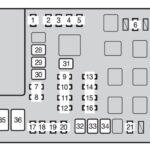For owners of the 2018 Hyundai Elantra GT Sport, the initial thrill of its turbocharged 1.6T engine might, over time, fade into a sense of wanting more. You’re not alone if you feel like the spirited potential hinted at in its sporty design isn’t fully realized on the road. This feeling often leads enthusiasts to explore the possibilities of performance modifications, particularly through OBD2 tuning. Let’s delve into why your Elantra GT Sport might feel a bit restrained and how you can tap into its hidden capabilities.
The Power Discrepancy: Elantra GT Sport vs. Heavier Hyundai Models
It’s a common observation among Hyundai enthusiasts that the 1.6T engine, while marketed as sporty in models like the Elantra GT Sport and Veloster, seems to deliver a different experience compared to its implementation in heavier vehicles like the Tucson and Sonata. The numbers speak for themselves: around 201 horsepower in the lighter Elantra GT Sport and Veloster, versus approximately 175 horsepower in the Tucson and Sonata. This isn’t just marketing fluff; there are genuine reasons behind this power variation.
Alt text: 2018 Hyundai Elantra GT Sport engine bay showcasing the 1.6T turbocharged engine, highlighting potential for OBD2 tuning performance upgrades.
Why the Detuning? Cooling and Weight Considerations
The key factors contributing to this power difference are cooling efficiency and vehicle weight. Lighter vehicles like the Elantra GT Sport and Veloster place less strain on the engine’s cooling system. Their radiators and intercoolers can more effectively manage heat dissipation, even when the engine is pushed harder for performance.
Conversely, heavier vehicles such as the Sonata and Tucson, especially those with optional all-wheel drive, present a greater cooling challenge. The added weight, sometimes 300-500 lbs, increases the thermal load on the engine. To ensure long-term reliability and prevent issues like heat soak – where the intercooler becomes saturated with heat, reducing its effectiveness and thus engine power – Hyundai detunes the 1.6T engine in these models via ECU (Engine Control Unit) programming. This detuning is a conservative measure to prioritize engine longevity and consistent performance under various driving conditions, even if it means sacrificing some peak horsepower.
The original manufacturers prioritize reliability and fuel efficiency for a broader market, often at the expense of outright performance that enthusiasts crave. This is where the potential of OBD2 tuning comes into play.
Alt text: AEM air intake system installed in a Hyundai Elantra GT Sport, illustrating a common performance modification to improve engine airflow and potentially increase horsepower.
OBD2 Tuning: Releasing the Bottleneck
The OBD2 (On-Board Diagnostics II) port in your 2018 Hyundai Elantra GT Sport provides a gateway to your car’s computer system, allowing tuners to recalibrate the ECU. This is where you can effectively address the factory detuning. Performance tuners can optimize parameters like fuel delivery, ignition timing, and boost pressure to safely extract more power from the 1.6T engine.
By remapping the ECU through OBD2 tuning, you can potentially bridge the horsepower gap and even exceed the stock output of the Elantra GT Sport. This approach directly targets the software limitations imposed by the manufacturer, unlocking the engine’s inherent capabilities.
Simple Performance Enhancements Beyond Tuning
Beyond ECU tuning, several bolt-on modifications can further enhance the performance of your Elantra GT Sport. Upgrading the air intake system with aftermarket options like those from AEM can improve airflow to the turbocharger, leading to better throttle response and potentially some horsepower gains. Similarly, modifications like an intercooler resonator delete pipe can optimize the airflow path and reduce restrictions in the intake system.
Alt text: AEM intercooler upgrade kit components for Hyundai vehicles, showcasing parts designed to improve cooling efficiency and reduce heat soak for enhanced engine performance.
While individual modifications like a resonator delete pipe might offer modest gains (as suggested by Veloster forum dyno tests showing a potential 10+ horsepower increase), they contribute to the overall improvement when combined with ECU tuning and other upgrades.
Conclusion: Take Control of Your Elantra GT Sport’s Performance
If you’re feeling “OBD2 bored” with the stock performance of your 2018 Hyundai Elantra GT Sport, know that there’s significant untapped potential under the hood. Understanding the reasons behind the factory power output and exploring options like OBD2 tuning and complementary modifications can transform your driving experience. Remember to research reputable tuners and modifications, and be mindful of the legal and warranty implications of any changes you make to your vehicle. Unleash the hidden power within your Elantra GT Sport and rediscover the thrill it was always meant to deliver.
References:
- LAP3 Performance Tune: https://www.k5optimastore.com/products/lap3-performance-tune
- AEM Air Intake System: https://www.aemintakes.com/search/product.aspx?prod=21-783C
- AEM Intercooler Upgrade: https://www.aemintakes.com/search/product.aspx?prod=26-3002C
- Shark Racing 1.6 TGDi Turbo Water Pump Pulley: http://www.sharkracing.com/1-6-tgdi-turbo-water-pump-pulley/
- SXTH Element Intercooler Resonator Delete Pipe: https://www.sxthelement.com/Intercooler-Resonator-Delete-Pipe-p/02-01-102.htm
- Hyundai Forums – Injen Intake 1.6T Eco: http://www.hyundai-forums.com/lf-2015-sonata-i45/502705-injen-intake-1-6t-eco.html
- Hyundai Forums – Secondary Cat Delete: http://www.hyundai-forums.com/lf-2015-sonata-i45/499513-secondary-cat-delete-wow.html
